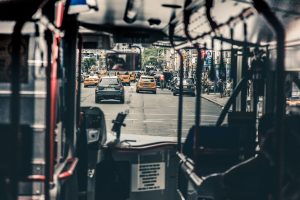
Fear is a powerful motivator, and as such the government sometimes responds poorly to the irrational fear of its citizens. In 1942, due to a fear of all things Japanese during WWII, the federal government rounded up all the Japanese people they could, including native-born citizens, and placed them in destitute internment camps. Before rounding up Jews and other minorities in concentration camps, the Nazis forced them to identify with yellow badges in the shape of a star, claiming that they were responsible for their country’s problems. Through these events, we learned the hard way that fear and blame, however unfounded, can lead to atrocity.
Comparisons to such human rights abuses are a stretch in today’s case, of course, and perhaps somewhat unfair, and yet the parallels are striking. After 9/11, the Metropolitan Transit Authority of New York City started enforcing a rule known as “brand or segregate”, in which Sikh and Muslim workers were forced to either mark their turbans with an MTA logo or work out of the sight of the general public. See the similarities? Fueled by xenophobic sentiment after the 9/11 tragedy, the MTA responded to American fear by taking steps to appease it: hide all the scary foreigners, or at least mark them so the good red-blooded Americans know to stay away.
Today, a lawsuit brought by the Department of Justice against the MTA has reached a settlement. Citing the 1964 Civil Rights Act and comparing it to the practice of seating black Americans at the back of the bus, the lawsuit claimed the MTA was motivated to hide workers in less desirable and less public jobs for religious and ethnic reasons. The MTA countered that the rules were there to uphold the standard of a uniform, despite the fact that the policy, which was on the books for years, was only enforced after anti-Muslim terror proliferated post-9/11. In fact, an MTA employee and plaintiff in this lawsuit who saved some 800 people on the day of 9/11 was not wearing an MTA-branded turban at the time.
The settlement requires MTA to change its headwear policies in addition to paying the six plaintiffs in the case $87,500 each. No longer will they have to wear the logo on their turbans and certain other head coverings, but the headwear does have to be blue to fit in with the color scheme of the rest of the uniform.
President Reagan eventually apologized for Japanese internment, saying it stemmed from “race prejudice, war hysteria, and a failure of political leadership” in an official declaration in 1988. You could say the same of the MTA today. Although this forced display of identifying marks is lower on the scale of religious/ethnic persecution as internment and yellow star badges, the cause is the same: prejudice, hysteria, and a failure of leadership.



